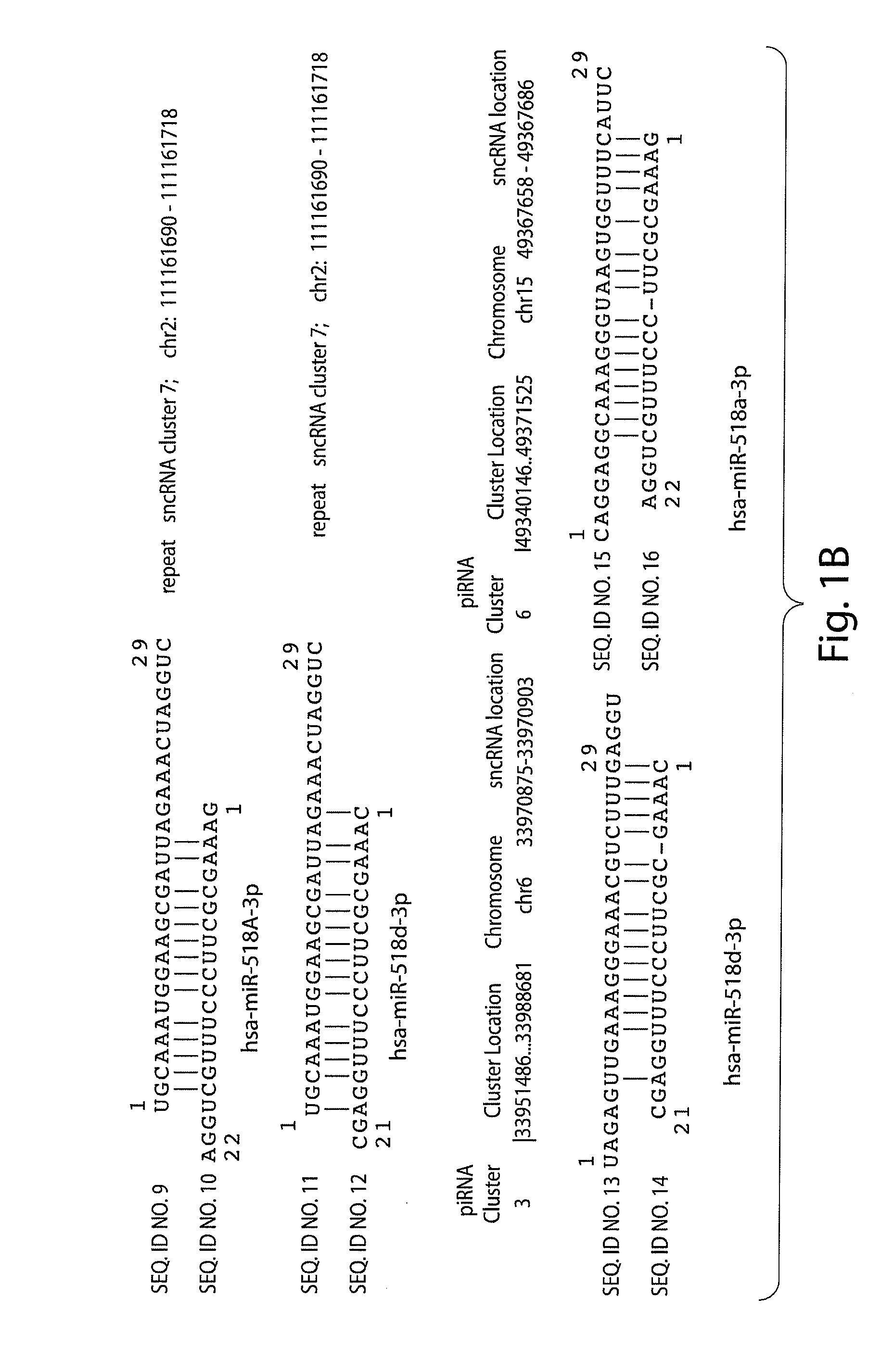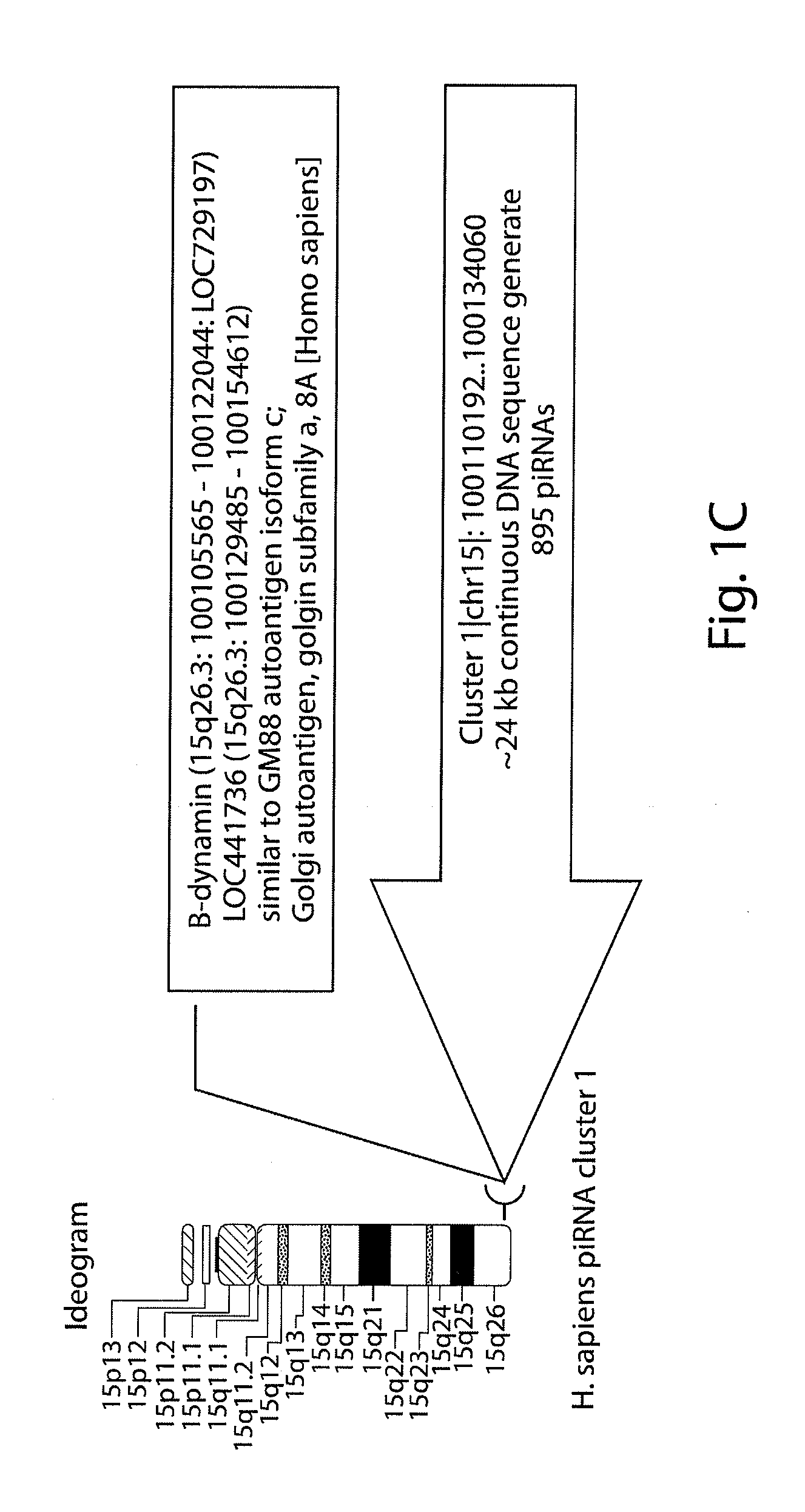Methods for Disease Therapy
a disease and disease technology, applied in the field of disease-linked snps, micrornas, and micrornatargeted mrnas, can solve the problems of lack of conceptual or experimental evidence supporting, and achieve the effect of assessing susceptibility to disease and assessing disease prognosis
- Summary
- Abstract
- Description
- Claims
- Application Information
AI Technical Summary
Benefits of technology
Problems solved by technology
Method used
Image
Examples
example 1
Materials and Methods
[0291]A sequence homology profiling was carried out of 2301 human small non-coding RNAs transcript that were previously identified and are accessible in publicly available databases. 314 intronic transcripts encoded by DNA sequences which are located in regions distal from previously annotated genes (at least 10 kb) as defined in the previously published work were analyzed. The general significance of these findings was validated by analysis of additional set of 629 transintrons identified for the ˜1% of the human genome in the ENCODE regions. A sequence homology profiling was carried out of 71 sncRNA transcripts, including 12 PASRs and 34 TASRs, expression of which was identified by microarray analysis and validated using independent analytical methods such as Northern and / or quantitative RT-PCR. 235 intergenic transcripts were analyzed and identified for the ˜1% of the human genome in the ENCODE regions. DNA sequences encoding these intregenic transcripts are ...
example 2
Practical Utility of Application of the Disease Phenocode Concept to Individual Human Disorders
[0300]Practical implementation of the disease phenocode concept offers unique opportunities for development of a new family of blockbuster drugs with potential broad clinical utility across the large spectrum of common human disorders. In addition, applications of the disease phenocode concept to individual human disorders can create a net of roadmaps to personalized health care management specifically tailored to genetically-defined diagnosis of pathological conditions and individual's disease profile. Specific examples of implementation of the disease phenocode concept to individual human disorders are outlined below. (See, e.g. FIGS. 21-23 and 27-47). In one example, the type 2 diabetes super MirMap shown in FIG. 38, includes only top-scoring SNPs and microRNAs, i.e. only those that manifest most sequence homology or complementarity events and it represents a subset of SNPs and microRNA...
PUM
| Property | Measurement | Unit |
|---|---|---|
| Fraction | aaaaa | aaaaa |
| Fraction | aaaaa | aaaaa |
| Fraction | aaaaa | aaaaa |
Abstract
Description
Claims
Application Information
 Login to View More
Login to View More - R&D
- Intellectual Property
- Life Sciences
- Materials
- Tech Scout
- Unparalleled Data Quality
- Higher Quality Content
- 60% Fewer Hallucinations
Browse by: Latest US Patents, China's latest patents, Technical Efficacy Thesaurus, Application Domain, Technology Topic, Popular Technical Reports.
© 2025 PatSnap. All rights reserved.Legal|Privacy policy|Modern Slavery Act Transparency Statement|Sitemap|About US| Contact US: help@patsnap.com



